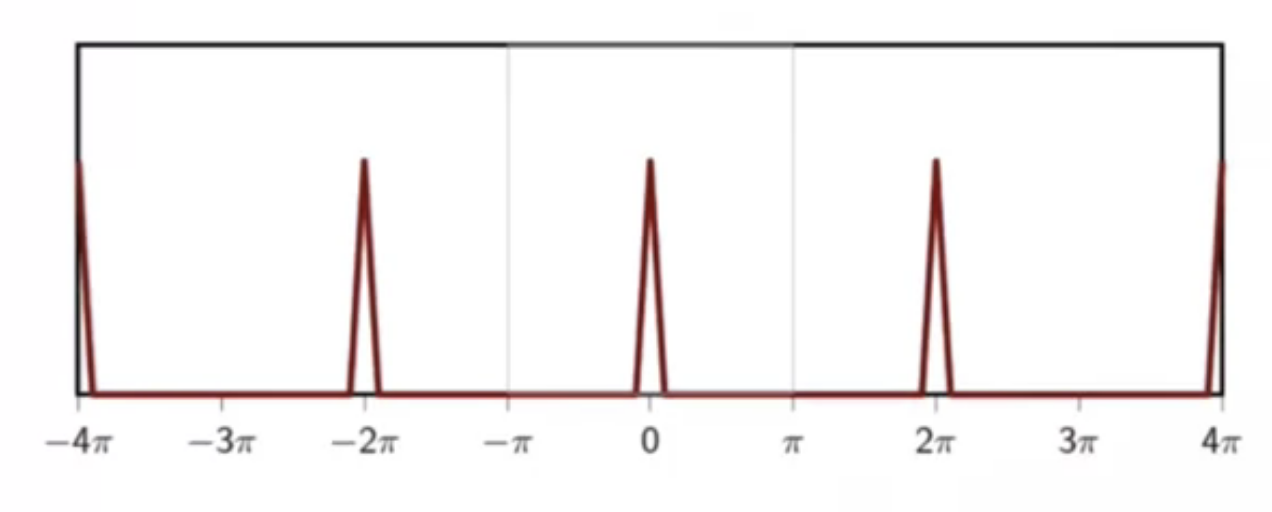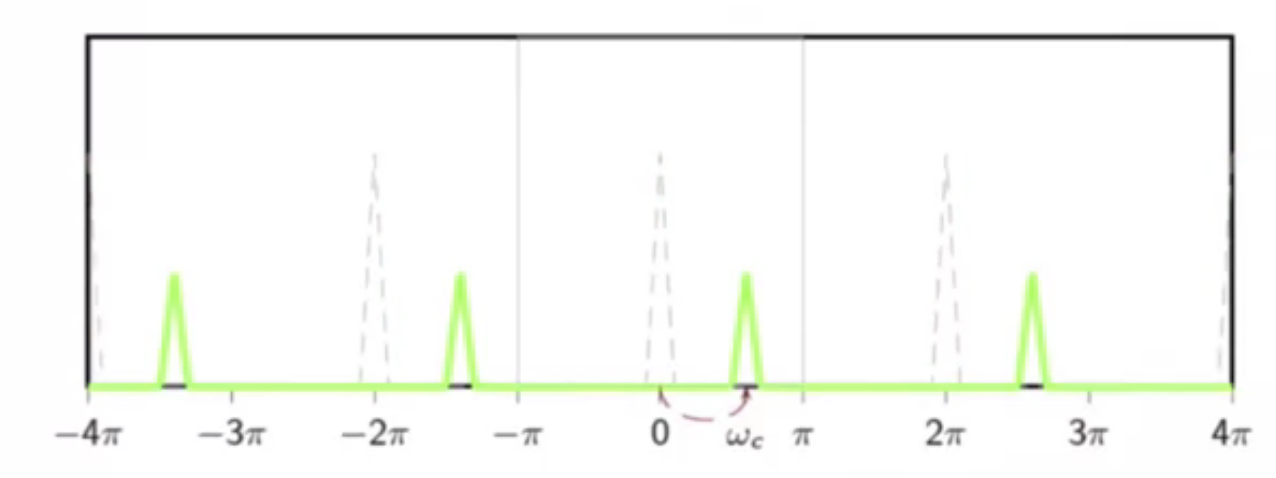[DSP] W04 - Sinusoidal Modulation
- in previous posts, calculating the spectrum of signals was explored
- in most cases, this spectrum is not wideband: it is mostly limited around a certain range of frequencies
- depending on this range, different types of signals can be defined.
- if most of the energy of a signal is concentrated around zero (resp. or ), it is a lowpass (reps. highpass) signal
- if the energy is concentrated somewhere in between, it is a bandpass signal
signal modulation
- fourier transform modulation theorem:
- allows to transform a signal
- for example, a lowpass signal can be modulated into a bandpass signal
- this operation can be reversed by demodulating
- this is obtained by simply multiplying the signal by a cosine at the adequate frequency
- having seen this theoretical result, it can be put to work on a practical application like tuning a guitar
categories based on energy concentration
- there are three broad categories according to where most of the spectral energy resides
- lowpass signals (baseband signals)
- highpass signals
- bandpass signals
-
lowpass signal: energy is mostly concentrated around the origin

fig: lowpass signal
-
bandpass signal: energy is mostly concentrated around and )

fig: bandpass signal
-
highpass signal: energy is mostly concentrated around or

fig: highpass signal
sinusoidal modulation
- this type of modulation is obtained by multiplying a signal with a
- is the carrier frequency
-
to analyze the spectrum of this modulation, take DTFT:
-
modulation, pictorially:

fig: begin with source signal

fig: apply shift

fig: apply shift

fig: modulated signal
- when modulation frequency is too large:
- when is close to or
- the original signal loses shape and information is lost
application of modulation
- modulation brings the baseband signal to the transmission band
- i.e. voice to radio frequencies
- demodulation at the receiver brings it back
- i.e. radio to voice
- voice and music are lowpass signals
- energy is lost during transmission over very short distances
- radio channels are bandpass signals
- their modulation frequencies are higher, else they lose the information embedded in them through interference
- radio waves are carrier signals and are modulated with audio sources
- then, they are transmitted from source to destination
- at the destination, the source audio is retrieved from the carrier by demodulation
sinusoidal demodulation
- simply multiply the received signal by the carrier again to get the original signal
-
demodulation, pictorially:

fig: source signal

fig: modulated version of signal

fig: signal shifted to right

fig: signal shifted to left

fig: sum of shifted signals

fig: demodulated signal
- the baseband signal can be recovered
- but some spurious high-frequency components exist
- those will have to be filtered out
application: guitar tuning
- problem statement:
- reference sinusoid: frequency
- tunable sinusoid: frequency
- tuning:
- make “by ear”
procedure
- bring close to
- when , play both sinusoids together
- trigonometry can then be used:
procedure analysis
- in
- error signal:
- modulation at
- when , error is too low to be heard
- so the modulation signal multiplication brings it up to hearing range
- it is perceived as amplitude oscillations of carrier frequency
- pictorially:
- red signal is the carrier frequency
- blue is the audible beats heard

fig: time domain signals - beat frequency

fig: time domain signals - slower beat frequency

fig: almost nil beat frequency